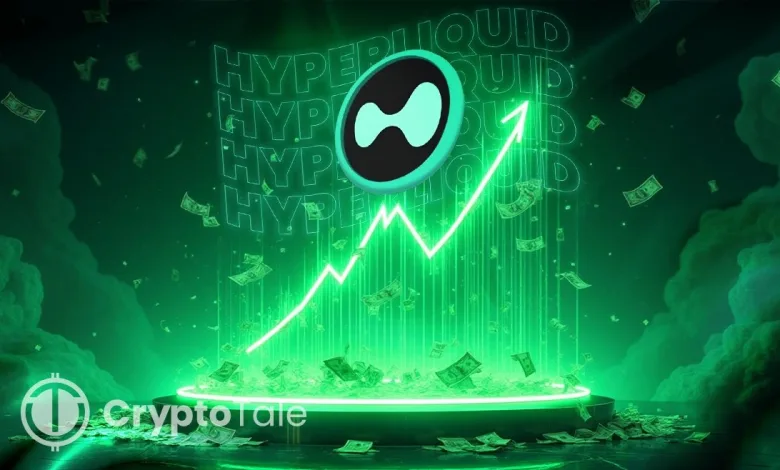Hyperliquid Enables Transparent, Permissionless DeFi Trading

- Hyperliquid’s HIP-3 allows developers to deploy perpetual DEXs without centralized approval.
- Builders earn up to 50% of trading fees by providing liquidity, oracles, and front-end tools.
- HIP-3 decentralizes market creation, challenging the high listing fees of centralized exchanges.
Hyperliquid launched its HIP-3 network upgrade, marking a pivotal moment in the world of decentralized finance. The upgrade allows developers to create their own perpetual decentralized exchanges without centralized approval. This change empowers the community by enabling permissionless trading and enhancing market deployment across the platform.
On October 13, HIP-3 went live, and it introduced one of the largest structural shifts in the protocol’s history. The new system removes the need for centralized approval when deploying perpetual markets. Instead, developers can deploy their markets directly, as long as they meet the on-chain requirements.
Decentralized Market Creation With Fee Sharing for Builders
Upon launch, builders would need to bring liquidity, oracles, and front-end interfaces to the perpetual markets they create. They could receive up to 50% of the trading fees their markets create.
This changes nothing for end users immediately, but completely decentralizes the process for listing new perpetual markets. According to an announcement, deployers deemed by the platform as qualified would have the ability to launch new perpetual markets when ready for trading.
The HIP-3 upgrade integrates with HyperEVM, a system supporting smart contracts and governance. It also includes crucial security features like validator slashing and open interest caps. These additions ensure a secure, transparent, and decentralized approach to perpetual market creation.
This strategic upgrade sets Hyperliquid apart from centralized exchanges (CEXs), which dominate the crypto industry. Jesse Pollak, a developer at Base, highlighted the growing frustration with CEX listing fees. He criticized them for their high listing fees, ranging from 2% to 9% of a token’s supply.
Lower Barriers and Improved Infrastructure for Decentralized Markets
The HIP-3 upgrade, on the other hand, provides a clear on-chain structure for creating markets. Developers will need to stake 500,000 HYPE in order to deploy markets. This makes it possible for more projects to establish markets without the financial burden of centralized platforms.
The upgrade also upgrades the infrastructure for market makers. Our exchange’s infrastructure is shared and runs on HyperCore, which allows for quick execution of orders and secure, fast generation of trading markets.
Industry analysts consider the HIP-3 upgrade as a major move in the area of decentralized derivatives trading. Reduced barriers to entry for markets may create turmoil in their traditional workings. The competition between the decentralized platforms will get fiercer as new projects continue to fill up the space.
Related: Pump.fun Overtakes Hyperliquid with $1B in Memecoin Trading
The high fees incurred on centralized exchanges have long been criticized by Binance founder Changpeng “CZ” Zhao. He highlighted that successful projects don’t have to depend on centralized exchanges to be listed. But instead of listing current tokens in exchange for high fees, exchanges should list by technology and merit.
The HIP-3 upgrade could offer a new light on how we as an industry can become more decentralized and equitable. It gives the developers an option to create something other than the centralized model for exchanging. As for the ability to bring more assets and projects onto its ecosystem, Hyperliquid’s move is a significant leap forward in innovative advancements within DeFi.
With the increasing adoption of DEXs, Hyperliquid’s HIP-3 upgrade takes market creation and trading to a new height. This is an evolution of the exchange model that offers a faster, simpler, and more accessible way for both developers and users to trade assets.





